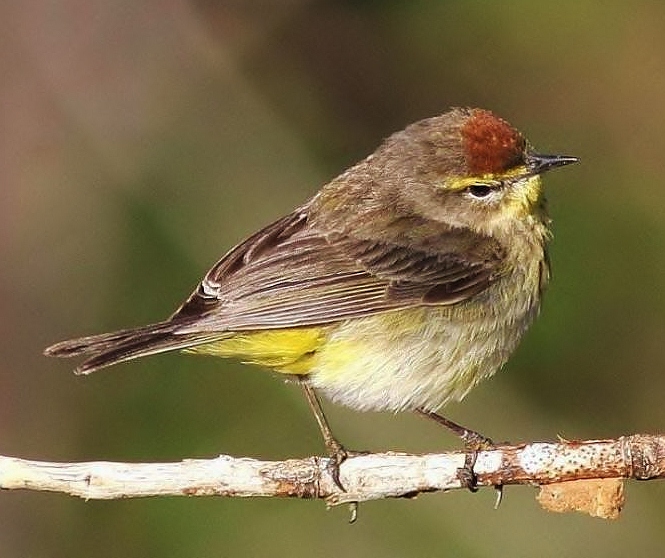 |
| Photo by Guy Poisson (Internet Bird Collection) |
Common name:
palm warbler (en); mariquita-das-palmeiras (pt); paruline à couronne rousse (fr); reinita palmera (es); palm-waldsänger (de)
Taxonomy:
Order Passeriformes
Family Parulidae
Range:
This species breeds in northern North America, from northern Canada to the northern United States in Minnesota, Wyoming, Michigan and Maine. They migrate south to winter along the pacific and Atlantic coasts of the United States, along the Gulf coast into Texas and also in the Caribbean as far south as Puerto Rico and along the Atlantic coast of Central America from southern Mexico to Panama.
Size:
These birds are 12,5-14,5 cm long and weigh 9-11 g.
Habitat:
The palm warbler breeds in open bogs bordered by coniferous forests, mainly spruces and tamaracks. They prefer bogs covered by Sphagnum mosses, sedges and other aquatic plants. Outside the breeding season they are found in a variety of habitats including grasslands, scrublands, swamps and marshes, savannas, mangroves, pastures, rural gardens and urban areas.
Diet:
They mainly forage on the ground, but in the foliage and take insects in flight. Their main prey include grasshoppers, beetles, flies, bugs, butterflies, moths, wasps, bees and ant larvae. Outside the breeding season they also eat berries, seeds and nectar.
Breeding:
Palm warblers are monogamous and breed in May-July. The nest is a cup made of weed stalks, grasses, sedges, bark shreds, rootlets and ferns, placed on moss-covered ground, usually at the base of a small tree near the margins of a bog. There the female lays 4-5 creamy-white eggs with brown markings, which are incubated by both parents for 12 days. The chicks are fed by both parents and fledge 12 days after hatching. Typically they raise a single clutch per year.
Conservation:
IUCN status – LC (Least Concern)
This species has a large breeding range and a global population estimated at 23 million individuals. The population has undergone a large increase of 45% per decade over the last 4 decades.







